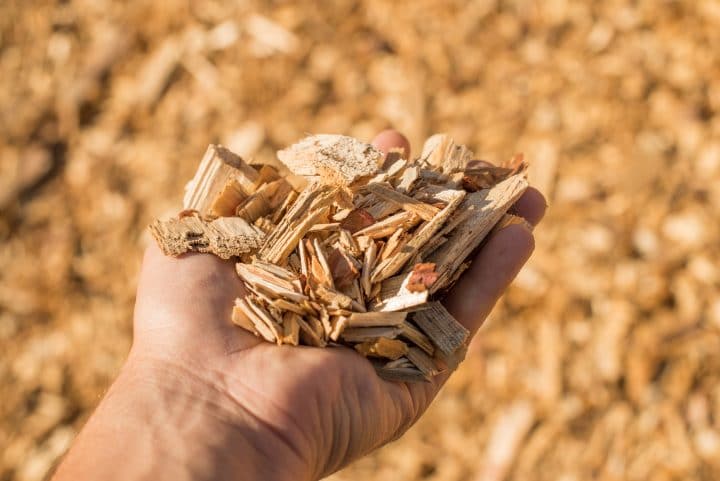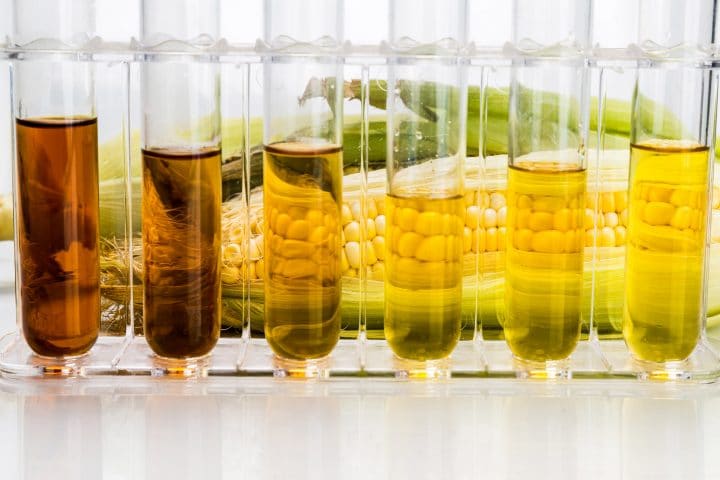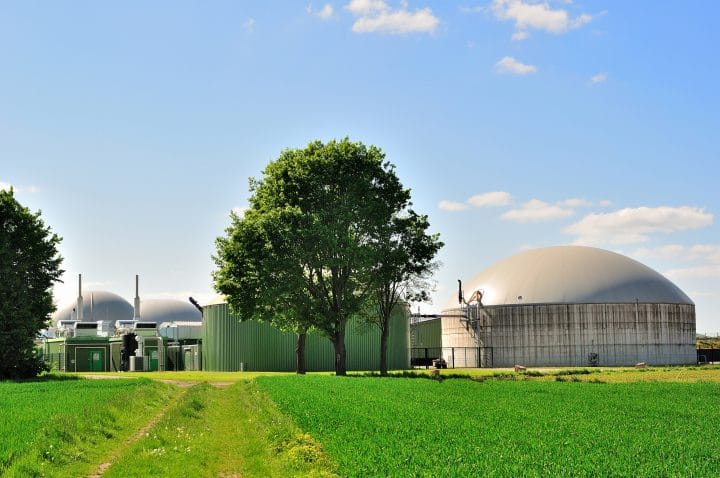Biomass describes the use of organic matter for energy production. When we say organic matter, we are referring to living or recently living organisms. These might include wood, crops, animal waste, and even grass clippings.
This article takes a closer look at biomass as a whole, where it comes from, and how we can use it. Continue reading to discover what biomass actually is.
The Main Sources of Biomass
Biomass energy (or bioenergy) can be produced from different materials and by-products, some of which may come as a surprise to you. Let’s now take a look at the main sources of biomass.
1. Wood
Wood is the most common source of Biomass. It comes in various forms, all of which are suitable for Biomass energy production:
- Wood chips, clippings, and sawdust.
- Whole tree trunks, cut logs, and tree bark.
- Fast growing tree crops such as willow and poplar.
2. Food Crops
Food crops are also suitable for making biomass energy. These are mostly used in the production of biofuels such as bioethanol and biodiesel. The most common ‘energy crops’ used in the biofuel industry are:
- Wheat
- Corn
- Sugarcane
- Canola & Rapeseed
- Soybean
- Sunflower
3. Animal Fats
It may come as a surprise to you to hear that animal fat can be used to create biomass energy, but it’s true. Animal fat can be found in biodiesel – a particular form of biofuel. This is often just one of the many different ingredients found in the fuel.
4. Sewage & Animal Waste
Yes, you can even use poo to produce biomass energy! Sewage and slurry (animal waste) can be used to produce biogas which is a gaseous fuel rich in methane. Biogas uses anaerobic digestion to create the gas – more on this later.
5. Municipal Solid Waste
Did you know that some countries burn municipal general waste to create energy? This process is often referred to as Refuse Derived Fuel or RDF for short.
Whilst the RDF process is very different from that of biomass, the solid waste it uses is likely to contain some organic matter. Such materials might include food and other waste products, which in theory, can be considered biomass.
The Different Types of Biomass Energy
As we have already discussed, there are many different sources of biomass. These can be used in very different ways to produce different forms of energy. Let’s now take a look at the different types of biomass energy.
Biomass Power (Electricity)
Biomass power describes the electricity that can be generated from the burning of biomass. Wood is the most common material used in this process. It is burnt in order to produce steam which then, in turn, can rotate a traditional turbine to generate electricity.

This type of biomass energy is produced mainly at large-scale facilities, such as purpose-built biomass plants. Some power companies have even converted traditional power plants to run solely on biomass. Others have developed infrastructure that allows them to burn fossil fuels and/or biomass, a process known as co-firing.
Biomass Fuels
Biomass fuel (biofuel) is a form of biomass energy and is mostly produced from food crops and animal fats. There are two main forms of biofuel; bioethanol and biodiesel.
Bioethanol is the most common form of biofuel. It is an alcohol fuel produced mainly from wheat, corn, sugarcane, and other starchy crops such as potatoes.
Biodiesel is the other form of biofuel and is commonly made from animal fats and vegetable oils. It is considered more expensive to produce and therefore is less common than bioethanol.

Whilst both bioethanol and biodiesel can be used on their own, they are commonly blended with petroleum fuels such as gasoline (for bioethanol) and diesel fuel (for biodiesel).
Biogas
The third main type of biomass energy is biogas. This is produced from the breakdown of organic matter, often performed inside an anaerobic digester. Whilst this can, in theory, be classified as a biofuel, we will describe it here in its own right.
The anaerobic digestion process (AD for short) removes oxygen inside a sealed chamber containing biomass materials. This is then heated to help speed up the decomposition of the biomass. During the decomposition process, methane is released and then captured for later use.

Biogas is commonly used for heating and cooking, but it can also be used as a fuel source in transportation.
Is Biomass Environmentally Friendly?
The short answer to this is yes, biomass is considered to be a very environmentally friendly source of energy. This is true because biomass is carbon neutral – it absorbs carbon whilst growing and then releases carbon dioxide back into the atmosphere when burnt.
It is important to remember that whilst biomass energy production is considered carbon neutral, RDF is not. This is due to the fact that municipal waste streams are likely to contain many non-organic compounds such as plastics.
Overview
So there we have the answer to what biomass energy is. Biomass uses organic material to produce energy in a variety of different ways. It can generate electricity, produce liquid fuels, and even create a form of natural gas. Energy crops, plants, and animals are all sources of biomass.
Biomass is considered one of the most environmentally friendly energy sources known to man. Whilst it doesn’t compare to the more mainstream renewable energy sources (such as solar and wind), it is vital in helping to reduce the net level of greenhouse gases we produce each year.